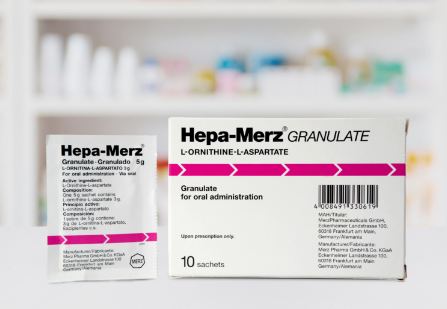An early diagnosis is important: The earlier HE is diagnosed and treated, the less the disease can progress and the better the symptoms, quality of life and general condition of the patient can be controlled.
Chronic liver disease: Experts assume that chronic liver diseases such as fatty liver disease or cirrhosis of the liver very often lead to HE. Since HE is always based on liver disease, both liver disease and HE must be diagnosed.
Clinical symptoms: Clinical symptoms are an important basis for the diagnosis of HE. This refers to symptoms that can be recognized from the outside and described by the patient and their relatives, such as fatigue, tremors, reduced ability to react. The severity of HE is also determined on the basis of these symptoms.
Psychometric tests: So-called psychometric tests have proved their value in determining mental condition such as concentration and fine motor skills more precisely. One example is a so-called “Number Connection Test” which you can do on this website.
Neurological examinations: In addition, neurological examinations such as critical flicker frequency analysis (CFF) or electroencephalography (EEG) can be performed in clinics or specialized liver centers.
Blood tests: Blood tests are not a priority for the diagnosis of HE. The determination of blood ammonia is rather difficult and is associated with sources of error (sample must be cooled immediately until analysis). However, they are very helpful for diagnosis and follow-up of the underlying liver disease.
According to ISHEN classification, today covert and overt HE are characterized by specific West-Haven criteria combinations as summarized below.
| WHC,including MHE | ISHEN | Description | Suggested operative criteria | Comment |
|---|
| Unimpaired | No encephalopathy at all, no history of HE | Tested and proved to be normal | |
| Minimal | Covert | Psychometric or neuropsychological alterations of tests exploring psychomotor speed/executive functions or neurophysiological alterations without clinical evidence of mental change | Abnormal results of established psychometric or neuropsychological tests without clinical manifestations | No universal criteria for diagnosis.
Local standards and expertise required |
| Grade I | • Trivial lack of awareness
• Euphoria or anxiety
• Shortened attention span
• Impairment of addition or subtraction | Despite oriented in time and space (see below), the patient appears to have some cognitive/behavioural decay with respect to his/her standard on clinical examination, or to the caregivers | Clinical findings usually not reproducible |
| Grade II | Overt | • Lethargy or apathy
• Disorientation for time
• Obvious personality change
• Inappropriate behavior | Disoriented for time (at least three of the followings are wrong: day of the month, day of the week, month, season, year) +/- the other mentioned symptoms | Clinical findings variable but reproducible to some extent |
| Grade III | • Somnolence to semi-stupor
• Responsive to stimuli
• Confused
• Gross disorientation
• Bizarre behavior | Disoriented also for space (at least three of the following wrongly reported: Country, State -or region-, city, place, +/- the other mentioned symptoms | Clinical findings reproducible to some extent |
| Grade IV | Coma | Do not respond even to pain stimuli | Comatose state usually reproducible |
Weissenborn K. Hepatic Encephalopathy: Definition, Clinical Grading and Diagnostic Principles. Drugs. 2019 Feb;79(Suppl 1):5-9. doi: 10.1007/s40265-018-1018-z.
Table reproduced from Vilstrup H, Amodio P, Bajaj J, Cordoba J, Ferenci P, Mullen KD, et al. Hepatic encephalopathy in chronic liver disease: 2014 Practice Guideline by the American Association for the Study of Liver Diseases and the European Association for the Study of the Liver. Hepatology. 2014;60:715–35.




